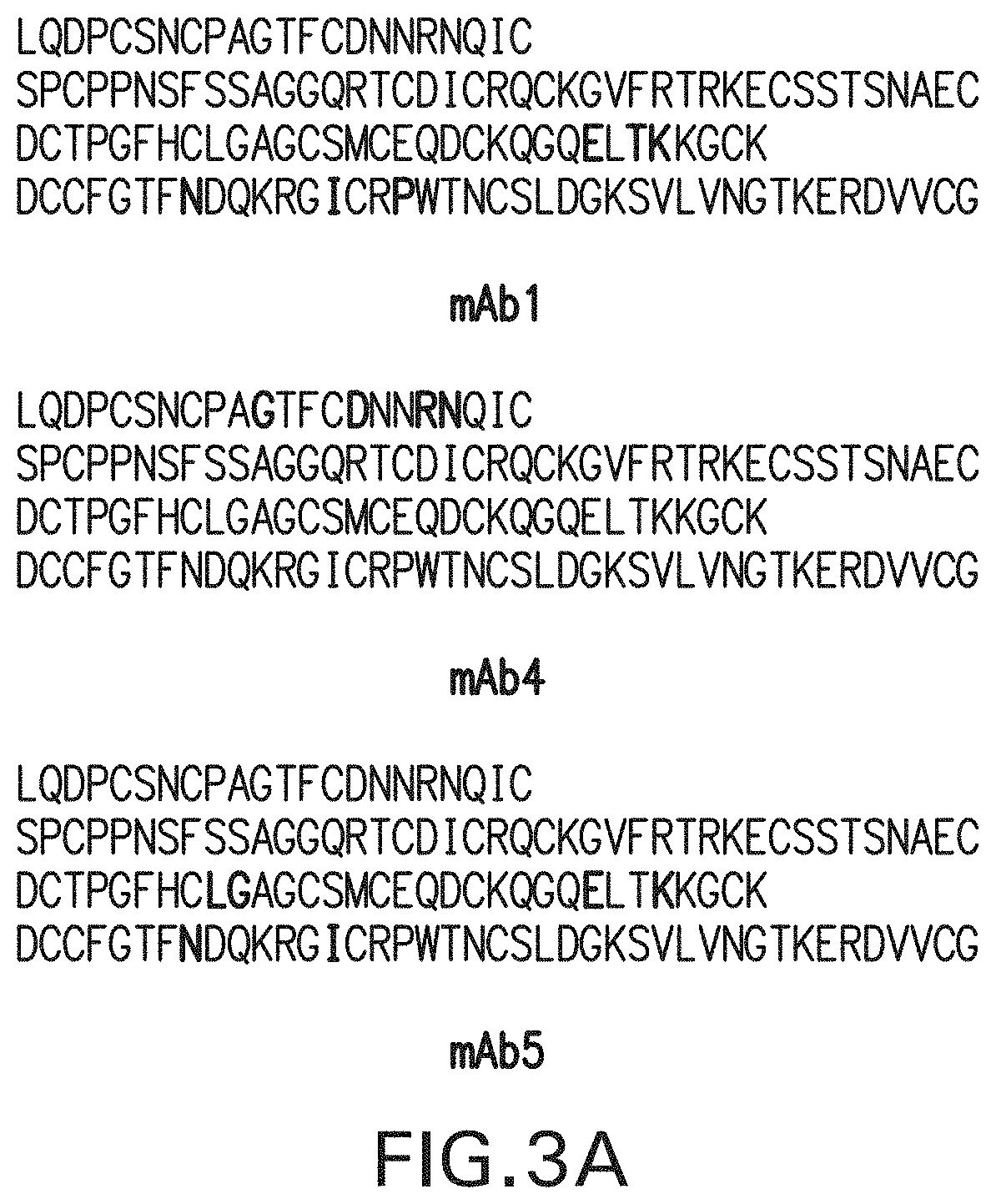Cd137 antibodies and tumor antigen-targeting antibodies and uses thereof
a technology of tumor antigen and cd137, which is applied in the direction of immunoglobulins, peptides, drug compositions, etc., can solve the problem of intuitive determination of which therapies are more effective when combined, and achieve the effect of reducing the quantity of t-regulatory (treg) cells and reducing the quantity of macrophages
- Summary
- Abstract
- Description
- Claims
- Application Information
AI Technical Summary
Benefits of technology
Problems solved by technology
Method used
Image
Examples
embodiment 28
E29. The method of embodiment 28, wherein the epitope comprises 6 amino acid residues.
E30. The method of any one of embodiments 1-13, wherein the agonistic isolated monoclonal antibody, or antigen-binding fragment thereof, (i) binds human CD137 with an affinity of about 30-100 nM; and (ii) binds to an epitope comprising ELTK (corresponding to amino acid residues 111-114 of SEQ ID NO: 3).
E31. The method of any one of embodiments 1-13, wherein the agonistic isolated monoclonal antibody, or antigen-binding fragment thereof, (i) binds human CD137 with an affinity (KD) of about 30-100 nM; (ii) specifically binds to an epitope comprising ELTK (corresponding to amino acid residues 111-114 of SEQ ID NO: 3); (iii) comprises a heavy chain CDR3 comprising the amino acid sequence DXXXXLXXXXYXYYX (SEQ ID NO: 126), wherein X is any amino acid; or (iv) combinations thereof.
E32. The method of any one of embodiments 1-13, wherein the agonistic isolated monoclonal antibody, or antigen-binding fragmen...
embodiment 60
E61. The method of embodiment 60, wherein the tumor antigen is a tumor-associated antigen (TAA), a tumor-specific antigen (TSA), or a tumor neoantigen.
E62. The method of any one of embodiments 53-61, wherein the subject comprises a tumor expressing or overexpressing human HER-2 / neu.
E63. The method of embodiment 53-61, wherein the subject comprises a tumor expressing or overexpressing human EGFR.
E64. The method of any one of embodiments 53-63, wherein the agonistic antibody or antigen-binding fragment comprises heavy and light chain CDRs, wherein heavy chain CDR3 comprises the amino acid sequence set forth in SEQ ID NO: 68.
E65. The method of any one of embodiments 53-63, wherein the agonistic antibody or antigen-binding fragment comprises heavy and light chain CDRs selected from the group consisting of:
[0939](a) heavy chain CDR1, CDR2 and CDR3 sequences set forth in SEQ ID NOs: 48, 56 and 68, respectively, and light chain CDR1, CDR2 and CDR3 sequences set forth in SEQ ID NOs: 69, 78 ...
embodiment 70
E71. The method of embodiment 70, wherein the agonistic antibody or antigen-binding fragment induces or enhances human CD137-mediated T cell activation in the tumor microenvironment, but does not significantly induce or enhance human CD137-mediated T cell activation in the spleen and / or liver.
PUM
| Property | Measurement | Unit |
|---|---|---|
| Fraction | aaaaa | aaaaa |
| Molar density | aaaaa | aaaaa |
| Molar density | aaaaa | aaaaa |
Abstract
Description
Claims
Application Information
 Login to View More
Login to View More - R&D
- Intellectual Property
- Life Sciences
- Materials
- Tech Scout
- Unparalleled Data Quality
- Higher Quality Content
- 60% Fewer Hallucinations
Browse by: Latest US Patents, China's latest patents, Technical Efficacy Thesaurus, Application Domain, Technology Topic, Popular Technical Reports.
© 2025 PatSnap. All rights reserved.Legal|Privacy policy|Modern Slavery Act Transparency Statement|Sitemap|About US| Contact US: help@patsnap.com



